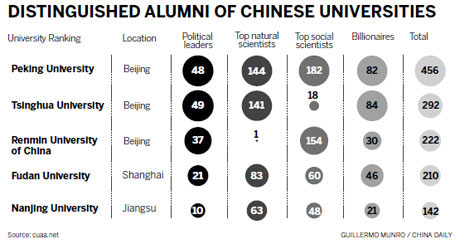Ranking the 100 under 50
 Most of the major rankings tend to be dominated by large research intensive institutions, and they also tend to be some of the older institutions in their respective countries. In order to examine what is going on with the newer institutions, Times Higher Education launched today a new ranking – calling it the “100 under 50″. In many ways this formulation somehow reminds of lists of young promising entrepreneurs, and one could perhaps argue that this resemblance in formulation is not completely coincidental.
Most of the major rankings tend to be dominated by large research intensive institutions, and they also tend to be some of the older institutions in their respective countries. In order to examine what is going on with the newer institutions, Times Higher Education launched today a new ranking – calling it the “100 under 50″. In many ways this formulation somehow reminds of lists of young promising entrepreneurs, and one could perhaps argue that this resemblance in formulation is not completely coincidental.In the complementary THE magazine these institutions are presented as having upward trajectories, little institutional baggage and opportunities for rapid response to societal needs – they are presented as somehow different and “doing their own thing“. Knowing the one Norwegian institution on that list – University of Tromsø – this “being different” motto was quite prominent during its establishment, and they were reffered to as a regional experiment during their establishment in 1968.
However, as the magazine also points out, this newness can also provide its challenges – where research cultures might not be established quite yet and the institution needs to finds its place in the local and global higher education landscape. Overall, it was well under half of these young universities, in fact only 19 of them, that rank amongst the top 200 in the world (according to World University Rankings). So – does this imply that when building a world class institution – age matters?
Another aspect is that this group includes institutions from 30 countries, with 20 of them coming from the UK. Depending on whether one counts Turkey as a part of Europe or not, there is 50 or 51 institutions that are from Europe. Australia can congratulate themselves with 14 institutions in this category, whereas the US only has 9 – a quite different image of the more general rankings where institutions from the US dominate. So – at least when examining the up and coming institutions, Europe is definitely not lagging behind. However, it is Asia who is the big winner overall, with the best institution on the list (Postech in Republic of Korea) and six institutions in top 20.
However, one should also bear in mind that this to an extent also says something about national policy landscape and the types of structural reforms higher education systems have gone through. In some smaller countries the higher education systems and number of institutions has been well established, leaving little space for new institutions. This is for example the case with Switzerland where it was only one institution that made it to the list.
Another factor to be considered when looking at this list is that it uses the same 13 indicators that are used for the general ranking – perhaps implying that it does not quite capture the innovative nature of the new institutions, and the measurement goes on the lines of institutions that do well on the same scale as the “old ones”. You can view a number of articles on the topic on the THE magazine that can be viewed here and a pdf table with the whole list can be viewed here.
See also World's top 100 universities under the age of 50: ranked by Times Higher Education.












/https%3A%2F%2Fprofilepics.canalblog.com%2Fprofilepics%2F1%2F0%2F1076071.jpg)